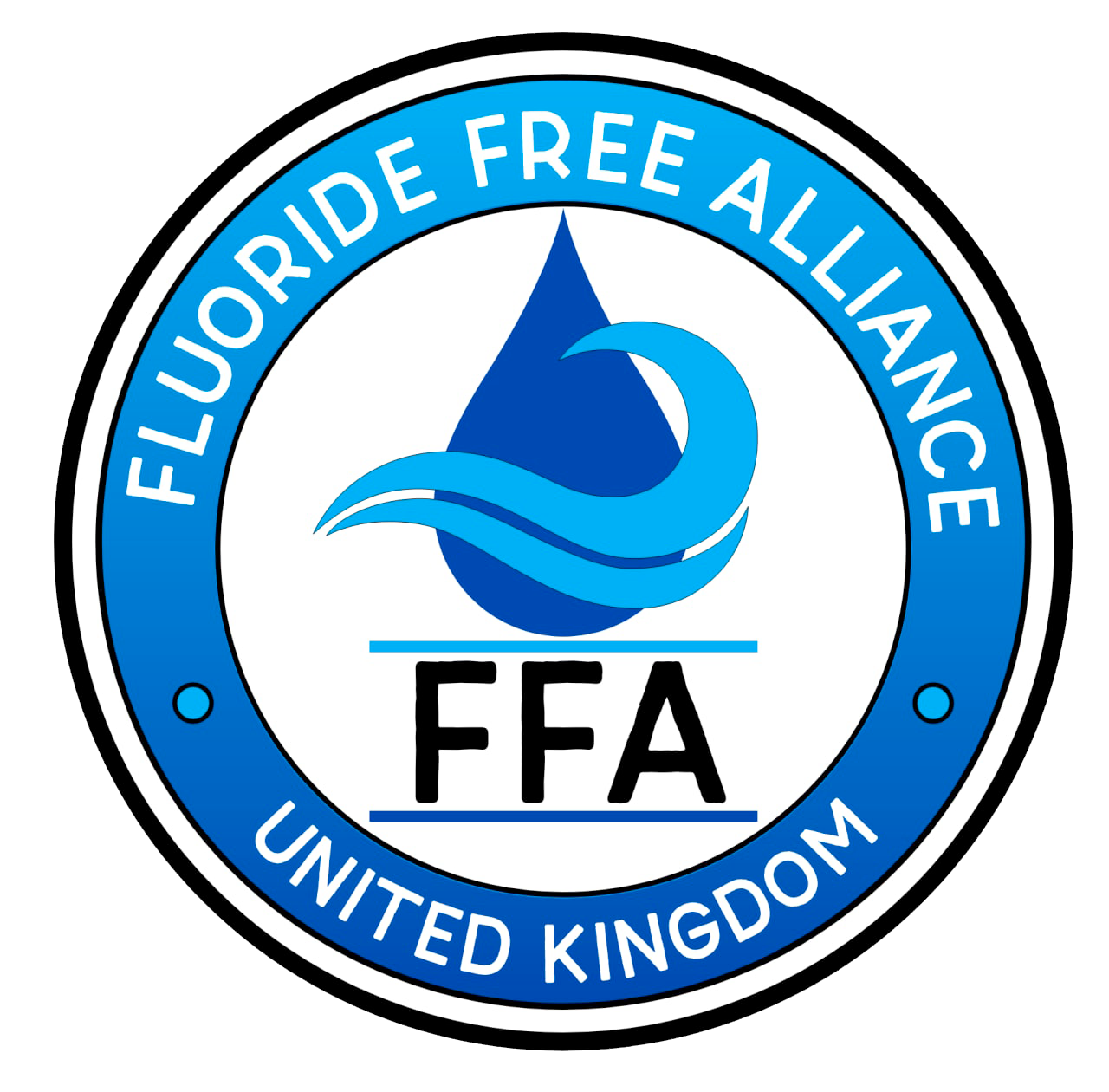Current Campaigns (2020-21)
1. North East of England- ongoing
2. West Cumbria - ongoing
3. Nottinghamshire and Nottingham City 2023-2024
4. Isle of Man 2023-2024
5. Other potential hotspots
1. North East of England
Public Health England's efforts to increase coverage of Water Fluoridation (WF) in the North East of England began in 2016 and has slowly been gathering momentum. PHE employees in the North East are 'seconded' to local authorities where they carry out valuable work ensuring that the public maintains or achieves good health. In respect of oral health, PHE has two responsibilities: (1) the gathering of oral health data and publication of surveys and (2) promotion of and administration of water fluoridation programmes. This latter 'task' was inherited from the Strategic Health Authorities (SHAs) in 2012.
Most of the SHA and Primary Care Trust staff moved over to the new Public Health England organisation in 2012-13.
PHE primarily focuses on the oral health of children 0 - 5 years old. Oral Health Surveys for 5-year-old children in their 1st year in Primary School take place every other year throughout England. The trend seems to be to attempt the examination of a drawn sample of 50% of all the 5-year-old children in England during one survey followed by a very inadequate drawn sample of far less than 50% for the following survey two years later. In some areas, however, there is a 50% drawn sample for an area for 2 consecutive surveys.
Inadequate sampling and the consequent unsatisfactory number of oral health examinations do not produce robust data and the conclusions based on inadequate sampling are bound to be inaccurate. Such inadequate statistics should never be used as a basis for urging Water Fluoridation - but they are!
Moreover, selective sampling means that PHE is enabled to find more or less dental decay (caries). PHE is pro-fluoridation and if that organisation wants to promote Water Fluoridation for an area, it will cite a high incidence of observed dental decay. In order to ensure that the examiners find high levels of dental decay the temptation is to survey more children in disadvantaged areas where more dental decay will be found. The survey can be planned to examine children in these areas instead of planning a survey which examines across all social groups. Similarly, if an area is fluoridated, and if PHE wants to prove that fluoridation is an important factor in reducing dental decay, it surveys more affluent fluoridated areas where dental decay is likely to be lower.
Data from surveys conducted in each electoral division (ED) are not normally placed in the public domain. So, when we're told that decay in 5-year-olds in X city is particularly bad and higher than the England average, we have no way of calculating which primary schools were visited by examiners for us to determine if they concentrated only on socially-disadvantaged areas. Grouping all primary schools together and publishing one statistic for a City does not give a true picture. Thus those areas where children are looking after their teeth are dammed by association. Water Fluoridation does not reduce dental health inequalities across social groups - a fact which we have been able to substantiate repeatedly down the years. In fact, Water Fluoridation is likely to "give rich kids poor kids' teeth". In no way could swallowed fluoride "give poor kids rich kids' teeth": that's a political falsehood of the first order!
Reducing health inequalities is a highly commendable aspiration but not if the means of attempting to do so reduces the health of those in the higher socio-economic sectors. The aim is to improve the health of disadvantged children without adversely affecting those who do not need an intervention. In this regard, WF is a thoroughly bad intervention since fluoride is added to drinking water which we all pay for and which we all have to drink because the water company has a monopoly. To avoid the "medicine" we have to spend extra money and this somewhat reverses the stated aim of reducing inequalities.
During the current promotion of WF in County Durham , Durham County Council was told that WF was "safe and effective" and that Derwentside (Consett and other towns in the area* ) had benefited from WF for decades. However, as noted above, the statistics for Derwentside are not consistently in the public domain. The current published Oral Health Survey (OHS) shows only data for County Durham and that's a very large area.
During the Covid-19 lockdown, UKFFFA, via FoI requests, is having great difficulty in acquiring dental health data obtained at the local (micro) level. Such data does exist but is not normally published. PHE staff are currently seconded onto other duties and the time delay in acquiring information is more than 20 working days. However, we are persevering. In the case of Durham County, a relatively few small areas of the County were identified as having highish levels of dental decay in 2015 and these areas were listed in the draft technical feasibility study commissioned by Durham County Council. However, we have no information relating to these small areas for the 2017 and 2019 oral health surveys. If we are not able to acquire the locality supplements via FoI requests, the Public Consultation will be based on data which is not in the public domain and which we have no means of verifying. This is a thoroughly unjust way of conducting business.
There is a great temptation amongst PHE Dental Health Consultants to believe that fluoridation status is linked with dental health status because this is what has traditionally been believed since the 1950s. In other words their belief is based on correlation as opposed to causation. It is all too easy to go with the
status quo . Claiming efficacy because of a seeming correlation is not proof and PHE needs to establish that it is fluoride which really does reduce dental decay. What seemed to be true in the past may no longer be true with the advancement of scientific discoveries and better nutritional status. It's a sobering thought that we are only at this stage today because text books provided with public health courses have not been subjected to a thorough overhaul.
During 2020, the areas in the North East under threat from Water Fluoridation are:
Sunderland City South Tyneside Borough Most of Durham County All of Durham City
Most of Northumberland A small part of Darlington Borough All of Alston Moor in Cumbria
Populations threatened. No. of people
County Durham 356,556
South Tyneside 157,938
Sunderland City 290,016
Northumberland 169,114
Northumberland resumed 27,383 (Due to equipment becoming not fit for purpose, Northumbrian Water stopped fluoridating the TOTAL 1,001,007 drinking water of these residents some years ago. The law allows a restart without Public Consultation even though the residents were not asked for their consent in the first place.)
Collateral Damage *
Darlington 2,589
Alston (Cumbria) 2,345
Stockton 31
Gateshead 2
Hartlepool 2
TOTAL 4,969
Fluoridation not proposed
Barnard Castle and surrounding area 21,000 approx.
(All households on well water.)
(* Collateral damage means that these residents receive their water via the same water mains as the threatened population of Durham County, Sunderland and South Tyneside and that it would be too expensive to switch them to other water mains which are not proposed (currently) for becoming fluoridated.)
When PHE first persuaded Durham County Council in 2016 afrer the statistically insignificant Orol Health Survey (OHS) for 2015 statistics were published, that dental decay in their County was really unacceptable, the original proposal was for specific areas of County Durham to become fluoridated. These were Easington and Peterlee on the East Coast, Bishop Auckland , Spennymoor and Shildon in the south of the County and The Wear Valley in the west of the County.
Durham County. Areas highlighted in red were the communities originally designated for Water Fluoridation in 2016
However, in February 2017, Northumbrian Water calculated that it would be less expensive to fluoridate the entire County than to fluoridate isolated areas. In order to select the least expensive option, Sunderland and South Tyneside would need to become fluoridated with those two local authorities taking part in the decision-making process. Thus, instead of fluoridating a total of 70,000 people + an unknown number in the Wear Valley, 809,479 people in the Durham Group (Durham County, Sunderland City and South Tyneside) could be affected including 2,345 people living in Alston Moor in Cumbria , and 2589 people living in Darlington.
Such a swingeing proposal is justified by PHE because WF is a "universal intervention" and PHE's own Return on Investment calculation claims it as being so! LINK PHE believes that Individuals don't matter because WF is "for the greater good". However, all those who are promoting WF have forgotten that dental decay is not an infectious disease and that 6% of the population are toothless. Moreover, many people suffer from acute and chronic diseases and it can hardly be good for their future health to be made to swallow several bioaccumulative toxins 24/7 for a lifetime. LINK
Since it isn't for the greater good, then WF can't be justified. At least five categories of people are adversely affected:
(1) the unborn child (reduced intelligence)
(2) the infant drinking fluoridated formula (reduced intelligence, dental fluorosis, Dental Fluorosis and dentine bombs);
(3) patients with chronic kidney disease (accumulation of fluoride in bones thus weakening the bones leading to fractures);
(4) people with low iodide status (hypothyroidism).
(4) ethnic minorites and, in particular, black africans and caribbeans who suffer from sickle-cell anaemia and lactose intolerance.
There are other diseases caused directly and indirectly by fluoride. Please visit www.fluoridealert.org ( LINK ) and search for a specific chronic illness on that website's excellent database.
Areas currently fluoridated in the North East are:
Parts of Northumberland Derwentside* in Durham County Chester-le-Street Gateshead North Tyneside Newcastle
(* Derwentside: Consett, Stanley, Tanfield, Annfield Plain, Delves Lane, Craghead and South Moor, and 6 others including Esh and Witton Gilbert. Lanchester may or may not be fluoridated.)
Areas which are threatened:
Durham County apart from Derwentside which is already fluoridated
Darlington Middlesbrough Stockton-on-Tees Cleveland with Redcar Barnard Castle possibly (County Durham)
Sunderland South Tyneside
Alston and District in North-East Cumbria which receives water from Northumbrian Water
Areas which may be threatened: Just about anywhere in England. The provinces of Wales, Scotland and Northern Ireland have more sense.
A WF Public Consultation (PC) was planned to start on 9th May 2020 for 3 months. However, due to the Covid-19 pandemic, this has been postponed. Once the pandemic is over, people will be reeling from the loss of partners, friends and relatives, from lowered income and disrupted lives. Life will take years to return to normal, particularly if we can't obliterate the virus worldwide. During this period of adjustment back to normality, we fear that PHE will attempt the resumption of the WF proposal.
Local authorities have the responsibility for proposing WF for their area of responsibility. We sincerely hope that none decide to pursue WF after the pandemic ends. Would that not be political suicide? The way to tackle dental decay is to initiate tooth-brushing in nurseries and primary schools and to reinforce dental hygiene as part of health visitors' advice to hard-to-reach families.
Local Authorities currently follow NICE Guidance which is very comprehensive. The Guidance ( LINK ) does not promote Water Fluoridation. On the introductory page, the emphasis is on oral health interventions at the individual level. We are concerned that although Durham County Council and Northumberland County Council have both implemented some of the NICE Guidance interventions, none of the minutes and reports dealing with dental health have reported whether or not the NICE interventions have been successful or otherwise. Until the outcomes are known, it is entirely premature to run Water Fluoridation in parallel with those individualised interventions. Specifically, how would we ever know which interventions have worked?
2. West Cumbria
The sub-region has been fluoridated for many decades apart from a break betweem 2006 and 2012 (Cornhow WTW) and between 2011 and 2012 (Ennerdale WTW) in the early noughties when the fluoridation equipment at both Water Treatment Works was found not to be fit for purpose. The water company, United Utilities, failed to make a concerted effort to inform the Strategic Health Authority and the laboratory responsible for analysing fluoride concentrations no longer was in operation. Also, the various changes in the NHS structure n the Region meant that monitoring of United Utilities' operations were not kept under review. When we analysed a sample of drinking water in 2011, we found that the water was fluoride-free. The word was soon spread with the result that UU was ordered to commission new fluoridation equipment. This came on line in 2013. Probably much to its dismay, Cumbria County Council has had to pay back the capital cost of the equipment by installments ever since.
In 2019, UU changed the source of raw water in the south of West Cumbria from Ennerdale Water to 2-3 boreholes which were drilled specifically for the purposes of ending water abstraction from the lake. This change was due to DEFRA ordering the reduction of abstraction of lake water in order to conserve a species of fresh water mussel. Many people started to have irritating health problems including painful stomachs. Kettles started popping and all sorts of detritus appeared in the tap water. United Utilities was forced to partly relent and mixed Ennerdale raw water with the borehole water in order to placate its customers. In the meantime, a new Water Treatment Works in aother watershed north of Cornhow and Ennerdale Water Treatment Works is being built at vast expense to replace those two Treatment Works. This is Williamsgate WTW.
Even though Williamsgate is not listed in the Schedules of the 1964 and 1971 Agreements between Cumberland County Council Health Authority and West Cumberland Water Board (now Cumbria County Council and United Utilities Water), Public Health England, prior to its dissolution, attempted to have WF initiated from Williamsgate. However, if Williamsgate WTW attempts to start WF, this will be in contravention of the existing Agreements. UKFFFA and Fluoride Free Cumbria have contacted Cumbria County Council by sending emails to all County Councillors on 12th December 2020 in which we pointed out the legal uncertainty of fluoridating from Williamsgate together with ample evidence that fluoride is a presumed developmental neurotoxin.
Before Ennerdale WTW and Cornhow WTW were fitted with new fluoridation equipment in 2012, the County Council were paying revenue costs but soon after they were also invoiced for capital costs of the fluoridation equipment in installments. See the Resources page for the costs for Cumbria which became far greater than in previous years. As soon as Williamsgate opens, both Cornhow and Ennerdale will be decommissioned, the fluoridation equipment sent for scrap and Cumbria County Council will start paying capital costs (again in installments) over 5-6 years into the future. As pointed out in our ground-breaking Researchgate technical report, most of the added fluoride never reaches the homes of constituents. So, all-in-all fluoridation is a complete waste of money! We realise, however, that less money could be wasted in the future if only one WTW fluoridates.
We secured a hearing at Cumbria County Council's Scrutiny Management Board on 25th June 2021 at which we were to discuss the draft scoping document prior to the Task and Finish Group being given their brief. We are aiming for fairness, not political decisions. However, fairness was the last thing on the minds of the Board and they approved of WF without too much agonising. In fact, we are led to believe that there was no agonising at all and that their decision was pre-determined.
Update - February 2024.
Fluoridation ceased temporarily between February 2023 and January 2024. The delay was due to waiting for the Environment Agency issuing a permit to discharge sewage following the opening of Williamsgate Water Treatment Works. The Government created two new contracts to justify the resumption of WF during 2023 and refused to accept that Williamsgate constituted a new WF programme and refused to accept that a Public Consumption could be justified. Thus, West Cumbria became refluoridated during January 2024. There is to be a Q&A meeting in public in Cockermouth on 14th March so that affected residents can be brought up to date on the situation.
During 2023, two studies were published which analysed the effect that swallowed fluoride has on dental decay.
CATFISH specifically examined children in West Cumbria and found that (1) there was a 4% improvement in oral health in areas which were fluoridated but (2) could find no evidence that fluoride reduces oral health inequalities across social groups.
LOTUS specifically examined adult oral health throughout England and found that (1) there was a 2% improvement in oral health in areas which were fluoridated but (2) could find no evidence that fluoride reduces oral health inequalities across social groups.
The studies were sponsored by the Government who clearly know the conclusions of the research BUT still persevere in saying that WF is "safe and effective".
Since the Government is unable to accept the advice from its own sponsored research we have to ask "what the hell is going on"?
3. Nottinghamshire and Nottingham City 2023-2024
In January 2024, Nottinghamshire County Council and its public Health Director applied to the Secretary of State for Health and Social
5. Other Possible "Hotspots"
The next to propose WF is
Sheffield
(possibly) and
Calderdale
(Halifax and environs). We feel that they will only "spark off" if the PHE campaign in the North East is successful.
Sheffield has already passed the WF proposal to Sheffield City Council's Cabinet which has approved. This was during 2019. And there the proposal seems to have stalled.
Calderdale Council is reported as being concerned about dental decay. Before the issue could be tabled for discussion, however, the Country went into lock-down.




